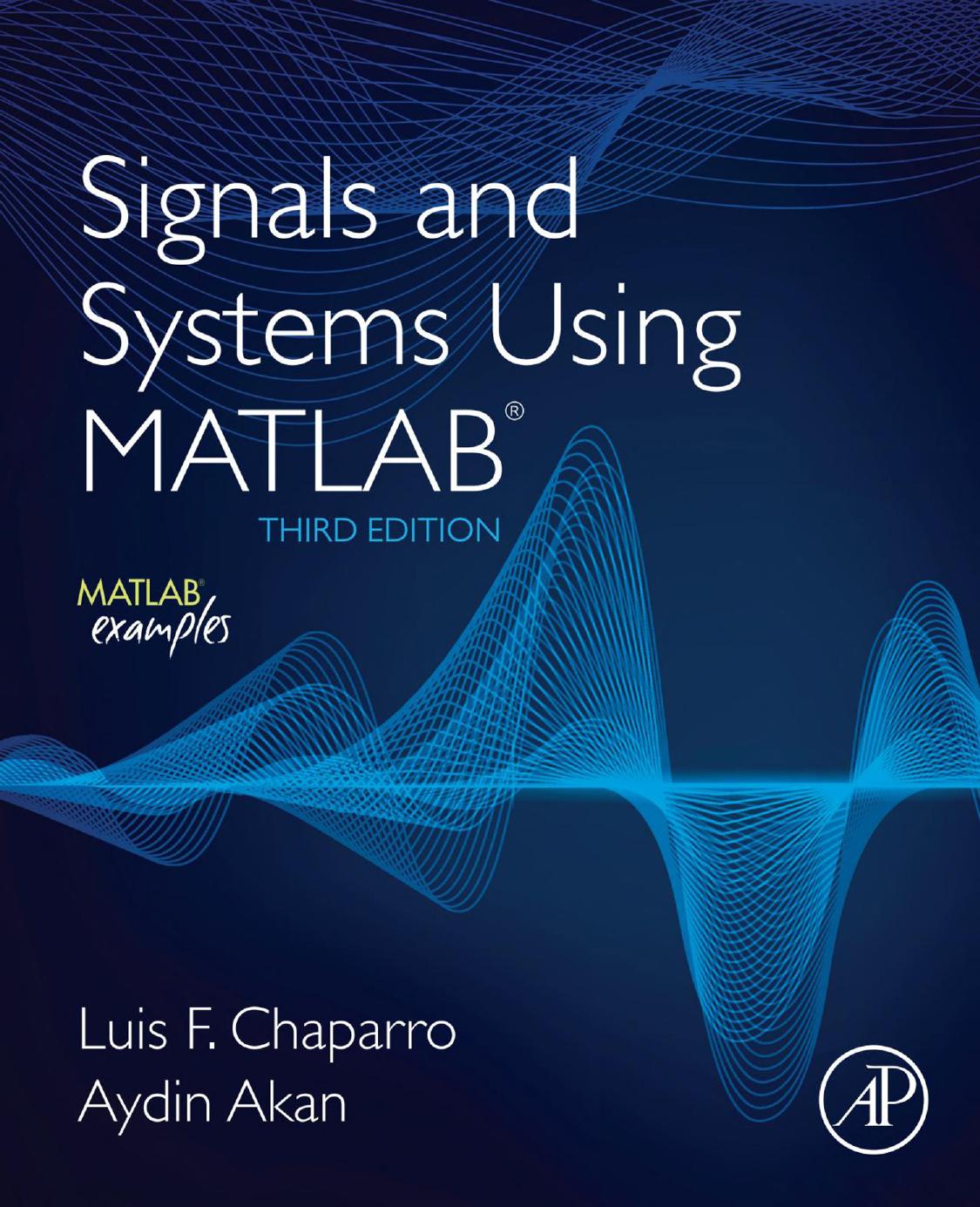Signals and Systems using MATLAB 3rd Edition by Luis Chaparro, Aydin Akan ISBN 0128142049 9780128142042
$70.00 Original price was: $70.00.$35.00Current price is: $35.00.
Instant download Signals and Systems using MATLAB 3rd Edition after payment
Signals and Systems using MATLAB 3rd Edition by Luis Chaparro, Aydin Akan – Ebook PDF Instant Download/Delivery: 0128142049, 9780128142042
Full dowload Signals and Systems using MATLAB 3rd Edition after payment

Product details:
ISBN 10: 0128142049
ISBN 13: 9780128142042
Author: Luis F. Chaparro; Aydin Akan
Signals and Systems Using MATLAB, Third Edition, features a pedagogically rich and accessible approach to what can commonly be a mathematically dry subject. Historical notes and common mistakes combined with applications in controls, communications and signal processing help students understand and appreciate the usefulness of the techniques described in the text. This new edition features more end-of-chapter problems, new content on two-dimensional signal processing, and discussions on the state-of-the-art in signal processing.
- Introduces both continuous and discrete systems early, then studies each (separately) in-depth
- Contains an extensive set of worked examples and homework assignments, with applications for controls, communications, and signal processing
- Begins with a review on all the background math necessary to study the subject
- Includes MATLAB® applications in every chapter
Signals and Systems using MATLAB 3rd Table of contents:
Chapter 1: Continuous-Time Signals
Abstract
1.1. Introduction
1.2. Classification of Time-Dependent Signals
1.3. Continuous-Time Signals
1.4. Representation of Continuous-Time Signals Using Basic Signals
1.5. Time Scaling, Modulation, Windowing and Integration
1.6. Special Signals—the Sampling and the Sinc Signals
1.7. What Have We Accomplished? Where Do We Go From Here?
1.8. Problems
Bibliography
Chapter 2: Continuous-Time Systems
Abstract
2.1. Introduction
2.2. System Concept and Classification
2.3. Linear Time-Invariant (LTI) Continuous-Time Systems
2.4. The Convolution Integral
2.5. Causality
2.6. Bounded Input–Bounded Output Stability
2.7. What Have We Accomplished? Where Do We Go From Here?
2.8. Problems
Bibliography
Chapter 3: The Laplace Transform
Abstract
3.1. Introduction
3.2. The Two-Sided Laplace Transform
3.3. The One-Sided Laplace Transform
3.4. Properties of the One-Sided Laplace Transform
3.5. Inverse Laplace Transform
3.6. The Transfer Function of LTI Systems
3.7. Analysis of LTI Systems Represented by Differential Equations
3.8. Inverse of Two-Sided Laplace Transforms
3.9. What Have We Accomplished? Where Do We Go From Here?
3.10. Problems
Bibliography
Chapter 4: Frequency Analysis: The Fourier Series
Abstract
4.1. Introduction
4.2. Eigenfunctions Revisited
4.3. Complex Exponential Fourier Series
4.4. Response of LTI Systems to Periodic Signals
4.5. Operations Using Fourier Series
4.6. What Have We Accomplished? Where Do We Go From Here?
4.7. Problems
Bibliography
Chapter 5: Frequency Analysis: The Fourier Transform
Abstract
5.1. Introduction
5.2. From the Fourier Series to the Fourier Transform
5.3. Existence of the Fourier Transform
5.4. Fourier Transforms From the Laplace Transform
5.5. Linearity, Inverse Proportionality and Duality
5.6. Spectral Representation
5.7. Convolution and Filtering
5.8. Additional Properties
5.9. What Have We Accomplished? What Is Next?
5.10. Problems
Bibliography
Chapter 6: Application of Laplace Analysis to Control
Abstract
6.1. Introduction
6.2. System Connections and Block Diagrams
6.3. Application to Classical Control
6.4. State-Variable Representation of LTI Systems
6.5. What Have We Accomplished? What Is Next?
6.6. Problems
Bibliography
Chapter 7: Fourier Analysis in Communications and Filtering
Abstract
7.1. Introduction
7.2. Application to Communications
7.3. Analog Filtering
7.4. What Have We Accomplished? What Is Next?
7.5. Problems
Bibliography
Part 3: Theory and Applications of Discrete-Time Signals and Systems
Chapter 8: Sampling Theory
Abstract
8.1. Introduction
8.2. Uniform Sampling
8.3. Practical Aspects of Sampling
8.4. Application to Digital Communications
8.5. What Have We Accomplished? Where Do We Go From Here?
8.6. Problems
Bibliography
Chapter 9: Discrete-Time Signals and Systems
Abstract
9.1. Introduction
9.2. Discrete-Time Signals
9.3. Discrete-Time Systems
9.4. Two-Dimensional Discrete Signals and Systems
9.5. What Have We Accomplished? Where Do We Go From Here?
9.6. Problems
Bibliography
Chapter: The Z-transform
Abstract
10.1. Introduction
10.2. Laplace Transform of Sampled Signals
10.3. Two-Sided Z-transform
10.4. One-Sided Z-transform
10.5. One-Sided Z-transform Inverse
10.6. State Variable Representation
10.7. Two-Dimensional Z-transform
10.8. What Have We Accomplished? Where Do We Go From Here?
10.9. Problems
Bibliography
Chapter 11: Discrete Fourier Analysis
Abstract
11.1. Introduction
11.2. The Discrete-Time Fourier Transform (DTFT)
11.3. Fourier Series of Discrete-Time Periodic Signals
11.4. The Discrete Fourier Transform (DFT)
11.5. Two-Dimensional Discrete Transforms
11.6. What Have We Accomplished? Where Do We Go From Here?
11.7. Problems
Bibliography
Chapter 12: Introduction to the Design of Discrete Filters
Abstract
12.1. Introduction
12.2. Frequency Selective Discrete Filters
12.3. Filter Specifications
12.4. IIR Filter Design
12.5. FIR Filter Design
12.6. Realization of Discrete Filters
12.7. Two-Dimensional Filtering of Images
12.8. What Have We Accomplished? Where Do We Go From Here?
12.9. Problems
People also search for Signals and Systems using MATLAB 3rd:
ignals and systems using matlab 3rd edition pdf
signals and systems using matlab 3rd edition solution manual
digital signal processing using matlab 3rd edition solution manual pdf
signals and systems analysis using transform methods and matlab


